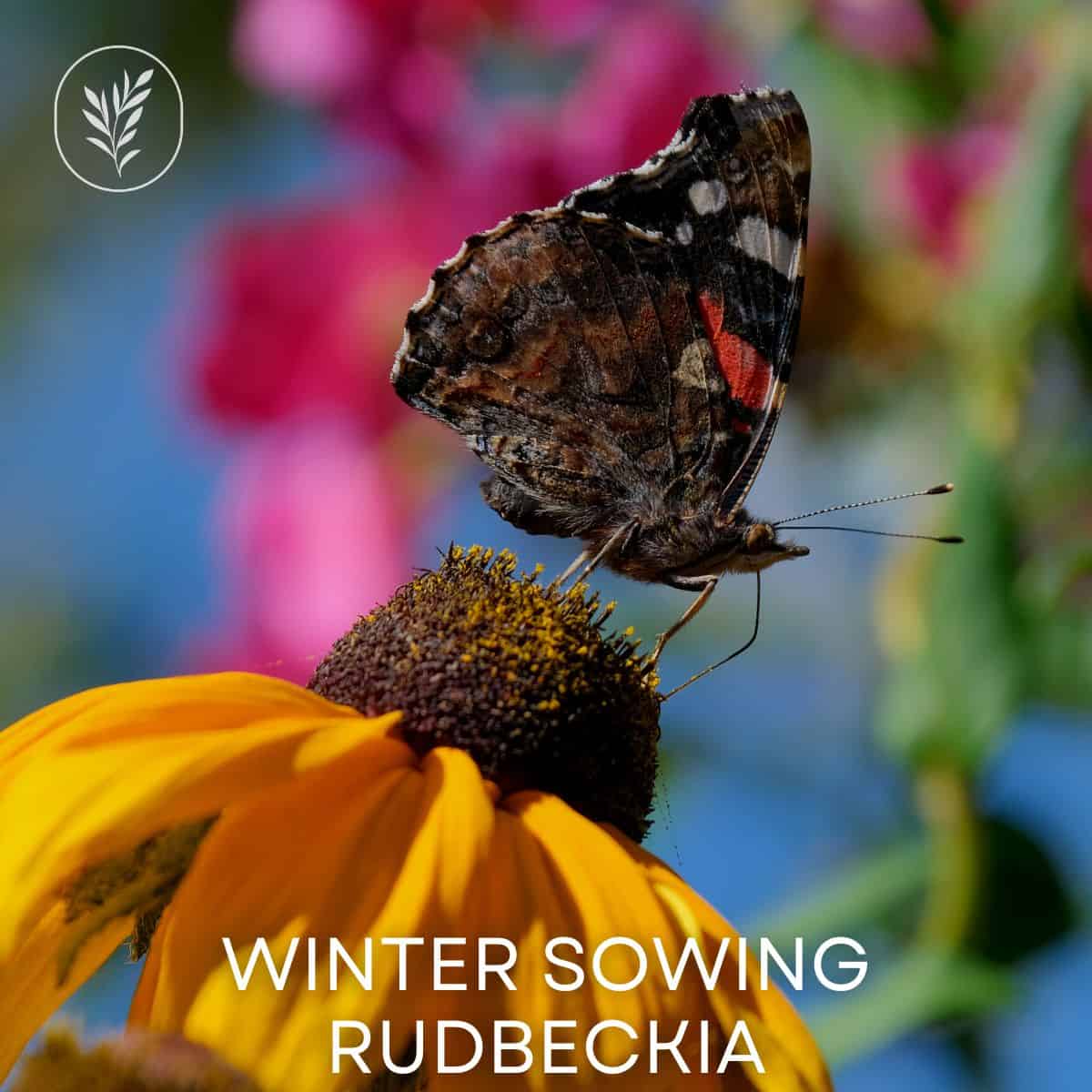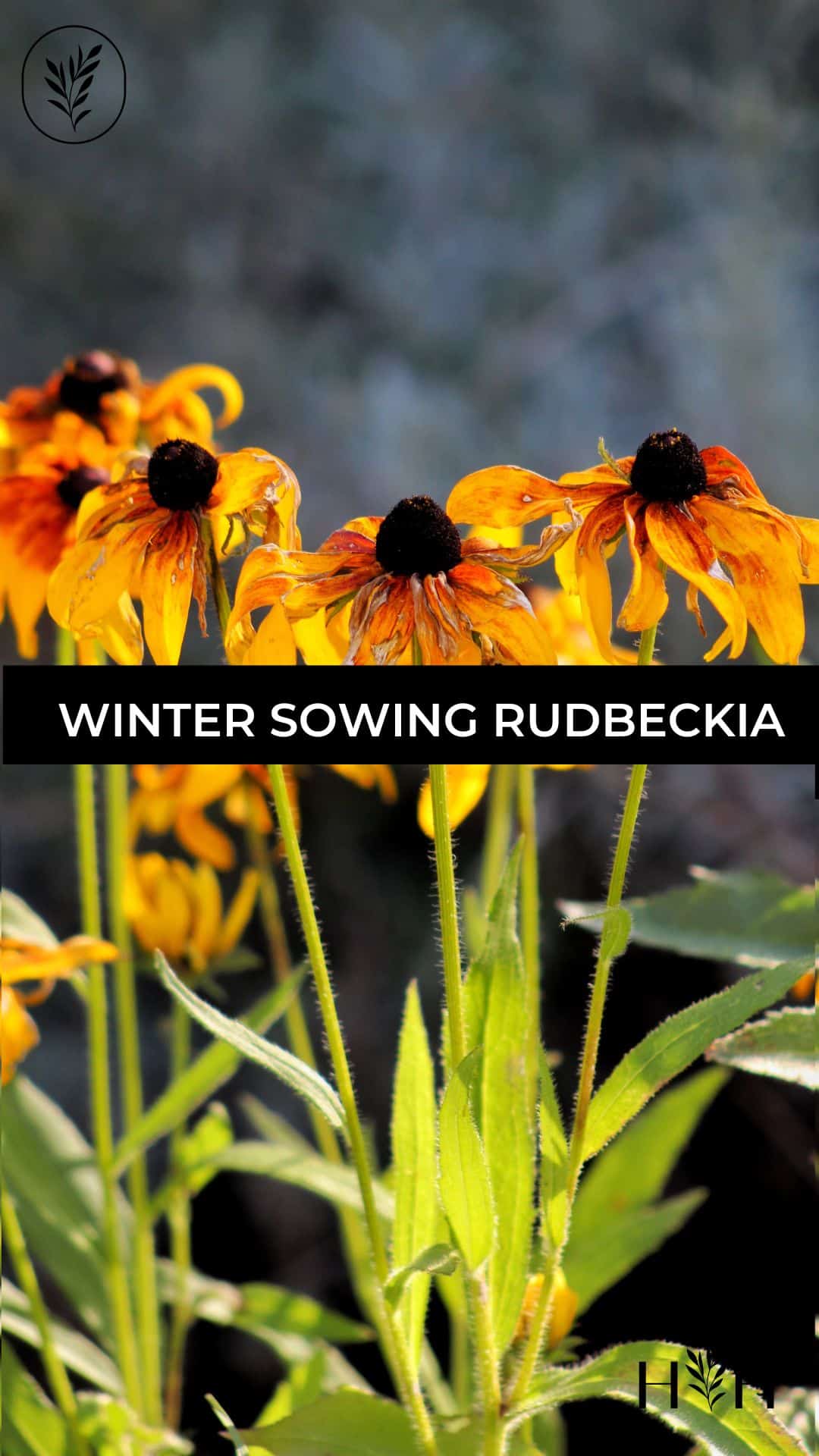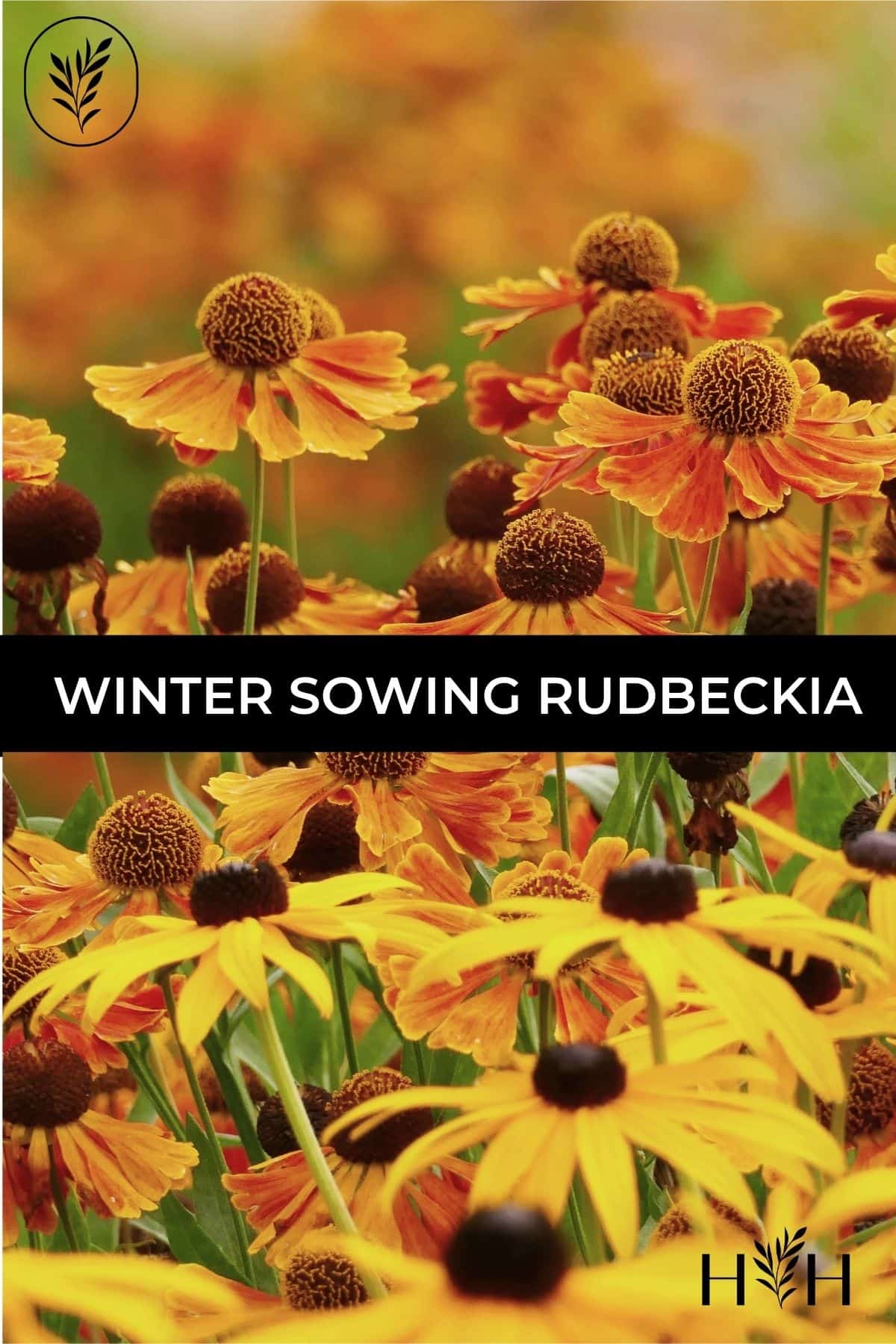Are you looking for a way to have beautiful, bright blooms of rudbeckia without the fuss and effort of gardening? Winter sowing rudbeckia is the perfect solution! With winter sowing, you can plant your seeds outdoors in colder months and let nature do its job. This method makes it easier to get those stunning yellow flowers into your garden. Plus, many benefits come with winter sowing rudbeckias, such as less work on your part and more robust plants.
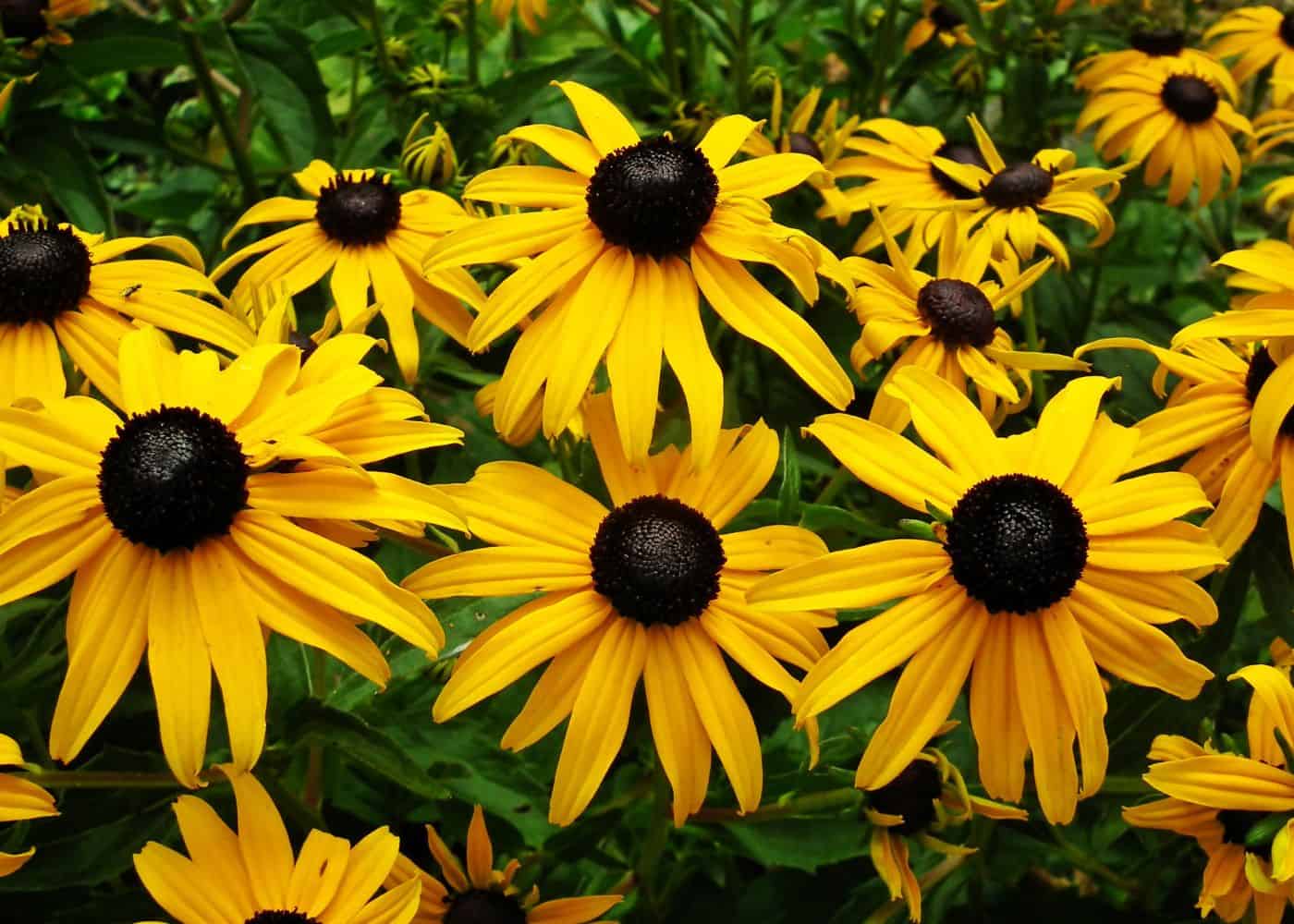
Winter sowing rudbeckia
Winter sowing rudbeckia is a great way to get your garden ready for spring. This method of gardening involves planting seeds outdoors in the winter months, allowing them to germinate and grow in the spring. Rudbeckia is an attractive flower with bright yellow petals and dark brown centers that will add beauty to any garden or landscape.
Winter sowing has many benefits over traditional methods of starting plants indoors or buying seedlings from a nursery. It’s much easier than trying to start plants indoors as it requires no special equipment or knowledge, just some basic supplies like containers, soil, and water. Plus, you don’t have to worry about temperature control or providing adequate light since the natural elements do all the work for you.
Winter-sown rudbeckia also tends to be hardier than those started indoors because they are exposed to more extreme temperatures during their growth period, which helps them become stronger plants when they reach maturity.
Basics of winter sowing black-eyed Susan seeds
To winter sow rudbeckia, gather your supplies: clear plastic containers (like yogurt cups), potting soil mix suitable for flowers/vegetables, and water-soluble fertilizer (optional). It’s also helpful to have a garden marker that won’t fade in the sun and rain.
Fill each container with potting soil up until 1 inch below its rim then sprinkle a few seeds per container on top of the soil surface before lightly pressing them down into place using your fingers. Finally moisten the surface with a spray bottle filled with lukewarm water and cover each container tightly with its lid before placing outside in an area that receives full sun exposure throughout most days – this could be anywhere from 6-8 hours depending on where you live.
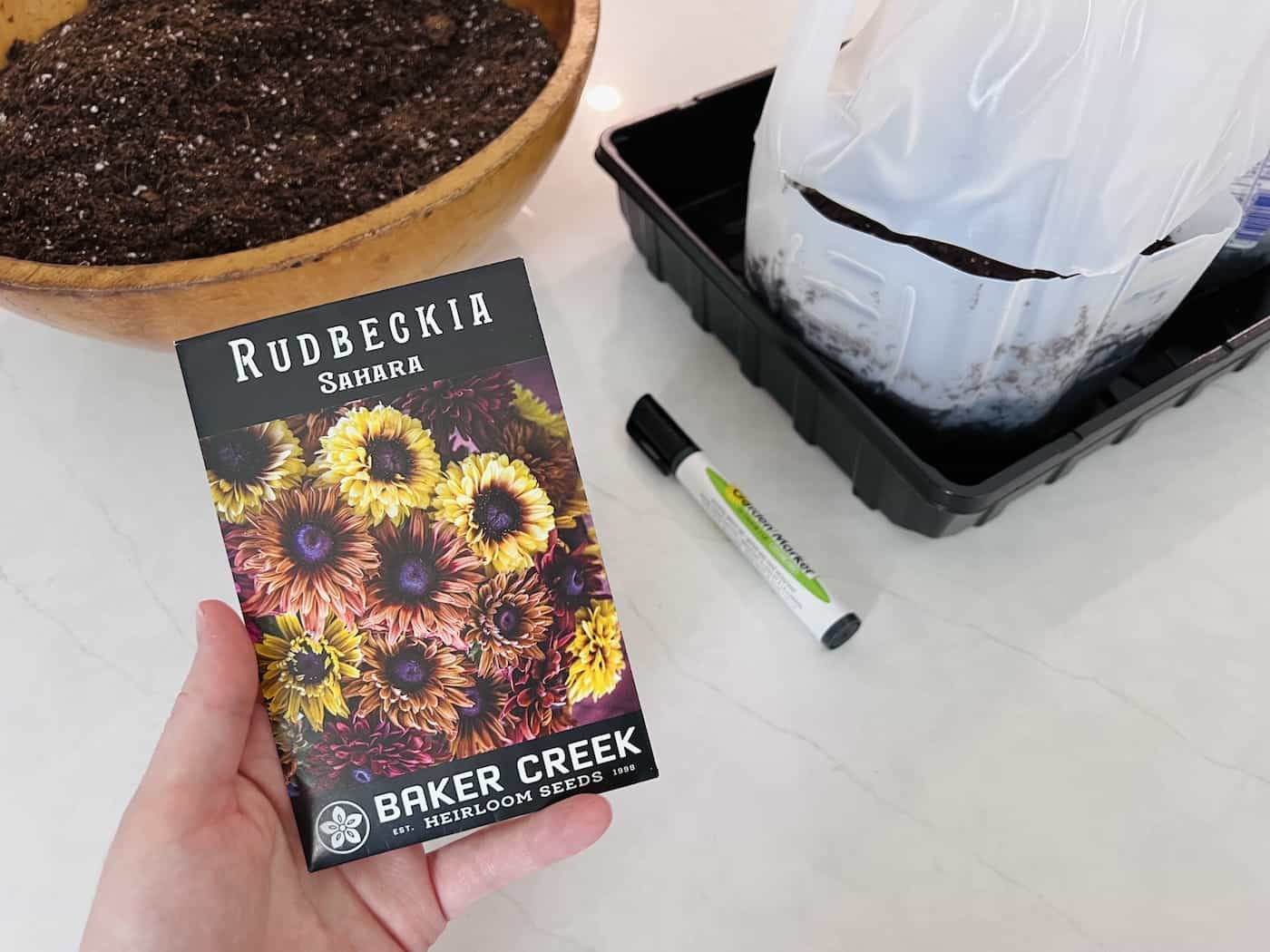
Benefits of winter sowing rudbeckia
One of the main advantages of winter sowing rudbeckia is that it allows you to plant in colder temperatures than other plants may not survive. Since the soil temperature stays cool during this time, weeds and pests are less likely to thrive, meaning fewer problems for gardeners later on. Additionally, since the seeds germinate outdoors, the seedlings tend to be more cold hardy than those grown indoors.
Caring for flats outdoors when winter sowing rudbeckia requires minimal effort as well. The seedlings should be kept moist but not overly wet; water them every few weeks if needed. Winter sowing Rudbeckia is an easy and cost-effective way to enjoy beautiful blooms in the summer, while also saving time and energy. Now let’s look at how to winter sow this stunning flower.
How to winter sow rudbeckia seeds
To winter sow rudbeckia, you will need a container such as a milk jug or plastic container with drainage holes cut into the bottom. Here are some ideas for winter sowing containers.
Fill the container with potting soil. Use a regular potting mix rather than a seed starting mix or another high-porosity blend. Something with some compost in it is ideal. Gently tamp down the soil with your fingers or a small spoon to eliminate air pockets. You can also pour a bit of water into the container to help the soil settle (and to check that the water is draining out easily).
Now its time to plant the seeds. You can sprinkle them right on the surface, since they are so small. If you have a very limited amount of seeds, plant only 1-2 per flat. If you’ve got lots of seeds, you can sprinkle them all over the surface of the soil.
Once you plant the seeds, you can mist the surface if you like with water. Then put on the cover and secure it closed with tape or another method. There should be a few air holes in the top cover just as the bottom of the container needs drainage holes.
Place the container outside in an area that receives direct sunlight during the day and cover it with plastic wrap or a loose lid to keep moisture in. Water regularly throughout the winter months if its really dry, and you should see sprouts emerging from the soil come spring.
Caring for the planted flats outdoors
When winter sowing Rudbeckia, the planted flats need to be cared for outdoors. The first step is to make sure they are placed in a spot that gets plenty of sunlight and has good drainage. If you have an area with sandy soil, this would be ideal as it will help keep the seedlings from becoming waterlogged. It’s also important to keep them away from any strong winds or heavy rains that could damage the delicate seedlings.
Once your flat is situated in its desired location, cover it with a plastic dome or cloche so that moisture can stay trapped inside and protect the plants from extreme temperatures. Make sure there are holes at either end of the dome for air circulation and remove it during warm days if necessary. You should also check on your flat regularly to ensure everything is going well and give it a light watering when needed (about once every week).
Finally, remember not to leave your flat outside for too long; most rudbeckia varieties will start germinating within 2-3 weeks after planting but they should be transplanted into individual pots or containers before summer arrives so as to avoid them becoming root bound in their original container.
Once the planted flats are outside, ensure they remain well-watered and in a sunny spot. Now that you have your rudbeckia seeds safely tucked away outdoors, it’s time to prepare for transplanting seedlings.
Transplanting rudbeckia seedlings
Transplanting rudbeckia seedlings is an easy way to add a splash of color and texture to your garden. Rudbeckia, also known as black-eyed Susan, is a popular annual flower that blooms from late summer through fall with bright yellow or orange petals surrounding a dark brown center. The plants are hardy and will thrive in most climates if given the right conditions.
When to transplant seedlings
The best time to transplant rudbeckia seedlings is when they have at least two sets of true leaves (not cotyledons/very first leaves). This usually occurs around 6-8 weeks after winter sowing outdoors. It’s important not to wait too long because the roots can become pot-bound which makes it difficult for them to establish themselves in their new environment.
Preparing the soil
Before you begin transplanting, make sure your soil has been properly prepared by tilling it and adding compost or fertilizer if needed. Pull out any weeds and remove dead plant debris from the area. This will help ensure that your newly transplanted seedlings get off on the right foot. Make sure there are no weeds present either; these can compete with your young plants for nutrients and water so be sure to remove any before planting begins.
Transplanting seedlings
Once you’ve prepared the soil, it’s time to start transplanting. Begin by carefully digging up each individual plant from its container using a small shovel or trowel – try not to disturb the root system too much as this could damage delicate roots, which could stunt growth later on down the line.
Place each plant into its own hole about twice as deep as its current height; then backfill with soil until level with the ground surface before gently pressing down around edges of the hole for good contact between roots and soil particles below them (this helps prevent air pockets forming). Water well immediately afterward but don’t overdo it – just enough so that all excess moisture drains away freely without pooling at the base of the plant stem(s).
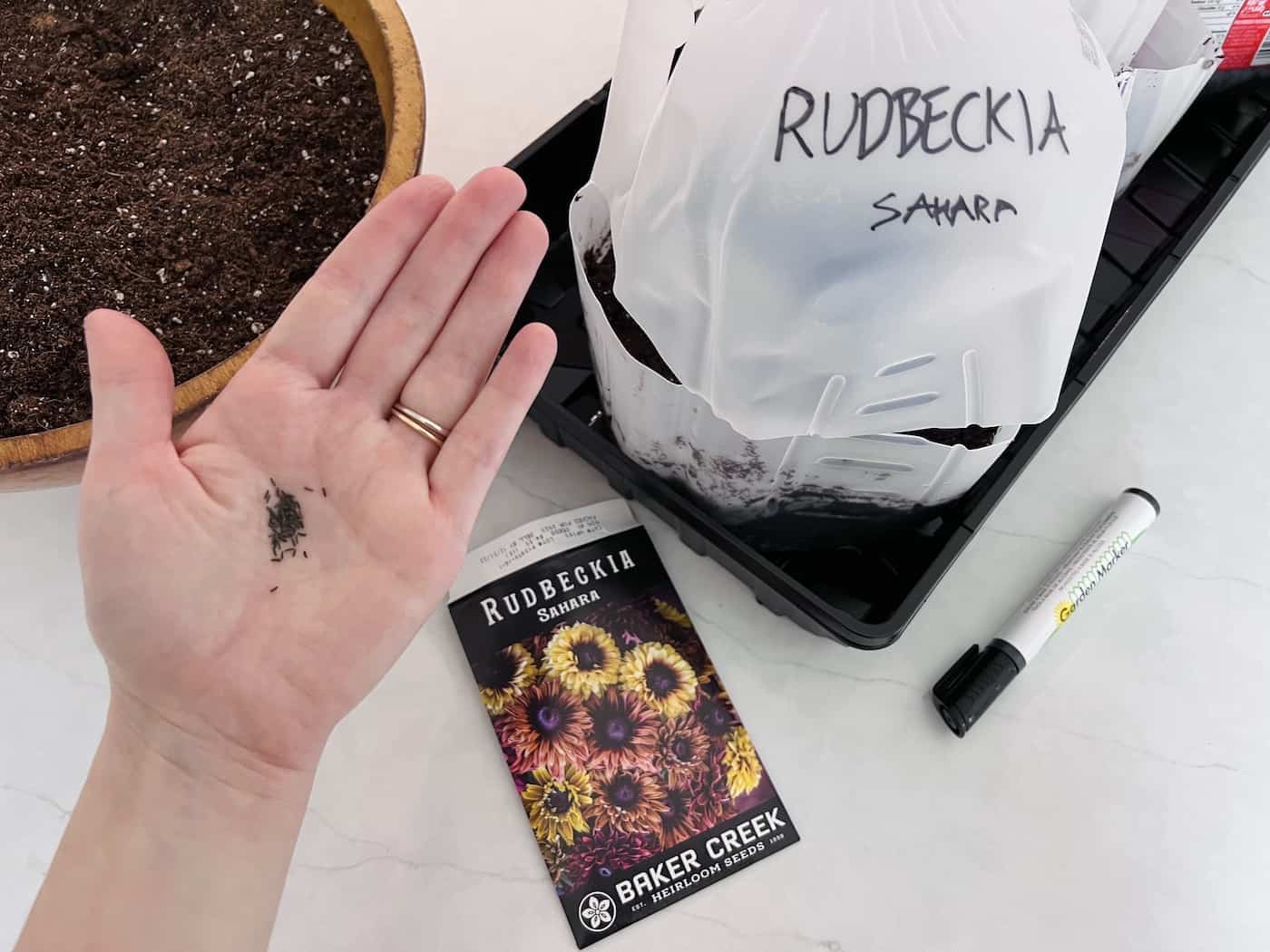
FAQs about winter sowing rudbeckia
Can you winter sow Black Eyed Susan?
Yes, you can winter sow Black Eyed Susan. This is a great way to get an early start on your garden and have beautiful blooms in the spring.
Winter sowing involves planting seeds outdoors during the coldest months of winter so that they are exposed to natural temperature fluctuations. It’s important to use containers with drainage holes and place them in a sunny spot for best results. The soil should be kept moist but not wet, and once temperatures rise above freezing, you’ll begin to see germination within 4-6 weeks.
Do rudbeckia seeds need cold stratification?
Yes, rudbeckia seeds do need cold stratification. This process helps to break down the seed coat and allows for better germination. Winter sowing allows you to do the cold stratification with minimal effort.
Cold stratification indoors can be done by placing the seeds in a moist paper towel or other material and storing them in a refrigerator for several weeks before planting. After this period of time, the seeds should be planted in well-drained soil at a depth of 1/4 inch or less.
Can you plant rudbeckia seeds in fall?
Yes, Rudbeckia seeds can be planted in the fall. This is a great time to plant them as they will have plenty of time to establish their roots before winter sets in. Planting them in the fall also gives them an advantage when it comes to blooming early next spring and summer. Make sure you prepare your soil properly and water regularly for best results. When planting, make sure that the seedlings are spaced out enough so that they have room to grow and thrive.
When should I start my Rudbeckia seeds if using winter sowing?
You can plant rudbeckia seeds using winter sowing starting in December and running anytime through March (in most climates).
Before you go…
Winter sowing rudbeckia is a great way to get your garden blooming early in the season. By taking advantage of cold weather, you can save time and money while growing vibrant flowers that will brighten up any outdoor space. Join us as we learn about winter sowing techniques for rudbeckia and how it can help create an inviting oasis in your own backyard!


